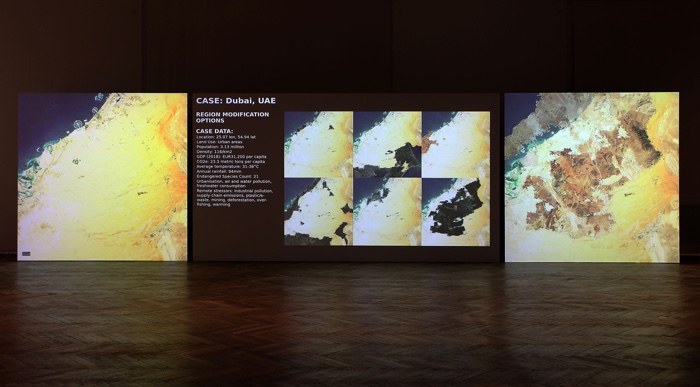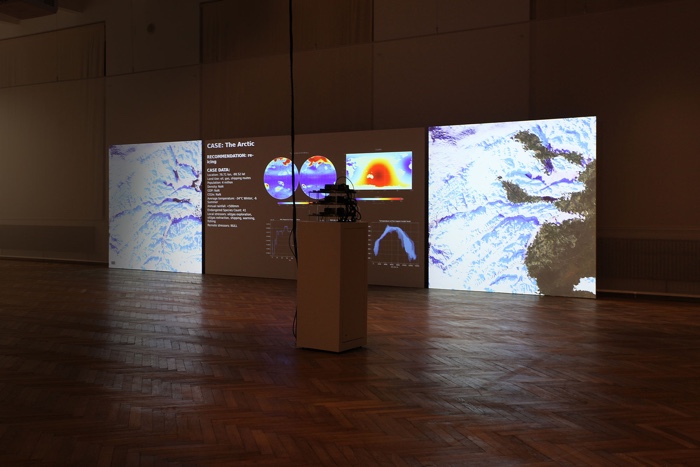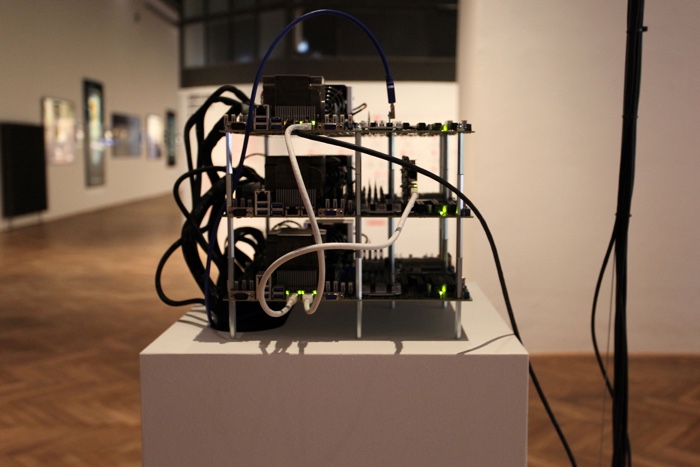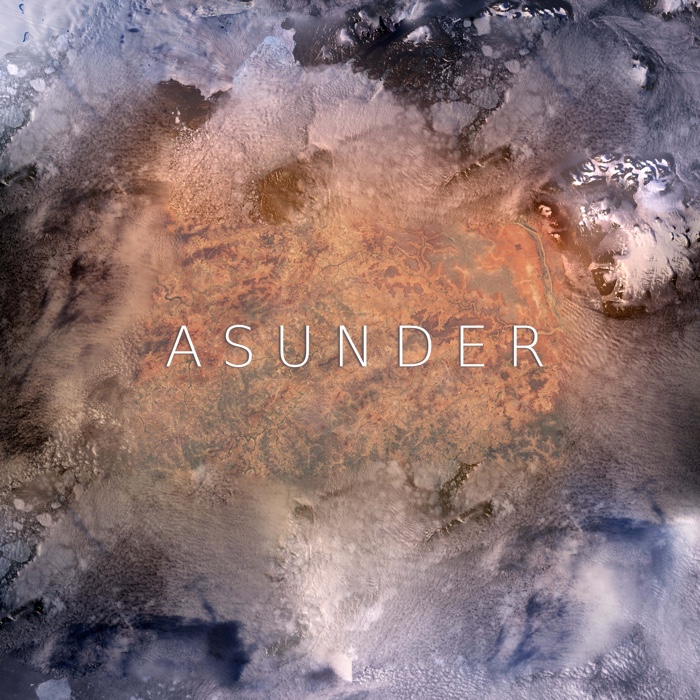Since i’m on an AI roll this week, i thought i should write about an artwork i tell everyone about but have never taken the time to mention on the blog: Asunder, an installation that exposes the possible consequences of an AI-driven management of the environment. I discovered it last June at the exhibition UNCANNY VALUES: Artificial Intelligence & You at the MAK museum for applied arts in Vienna.
![]()
Tega Brain, Julian Oliver and Bengt Sjölén, Asunder, 2019
Artist and environmental engineer Tega Brain, Critical Engineer, artist and activist Julian Oliver and software and hardware designer/hacker/artist Bengt Sjölén developed a supercomputer that gathers satellite, climate, topography, geology, biodiversity, population and social media data in real time. The system then uses the information to interpret and “correct” selected parts of the world that face various ecological challenges: the Arctic, the Brazilian rainforest, the Athabasca oil sands in Canada, Silicon Valley, Dubai, Vienna.

Tega Brain, Julian Oliver and Bengt Sjölén, Asunder, 2019. Exhibition view at the Vienna Biennale for Change 2019
![]()
Tega Brain, Julian Oliver and Bengt Sjölén, Asunder, 2019. Exhibition view at the Vienna Biennale for Change 2019

Tega Brain, Julian Oliver and Bengt Sjölén, Asunder, 2019. Exhibition view at the Vienna Biennale for Change 2019
The results of the calculations, visualised onto three screens, are ambitious environmental management plans that, for a change, don’t put the human at the center of the equation but look for a balance between the management of natural resources, social justice, protection of endangered species and sustainable production. In consequence, humans will probably find some of the AI suggestions deeply disturbing: the system recommends whole cities being relocated or simply removed, forests planted, coastlines strengthened, lithium mines transferred to technological production sites and other large-scale interventions on the landscape.
The work suggests that we might not be ready to give up our own vision of a prosperous world for the sake of environmental justice. Asunder also makes clear that, no matter what some advocates of geo-engineering and big data say, ecosystems are too fragile and too complex to be mathematically “optimised” and that algorithms are unlikely to provide the solution to the climate emergency and its consequences.

Tega Brain, Julian Oliver and Bengt Sjölén, Asunder, 2019. Exhibition view at the Vienna Biennale for Change 2019
The other interesting aspect of the work is that the computer requires a lot of processing power (and thus energy) in order to be able to analyse vast amounts of data and run climate models. Which, obviously, further undermines the idea that the salvation of our planet lays in the capable and caring hands of technology.

Tega Brain, Julian Oliver and Bengt Sjölén, Asunder, 2019
For more background on the research behind the project, do read Tega Brain’s essay The Environment is Not a System.
